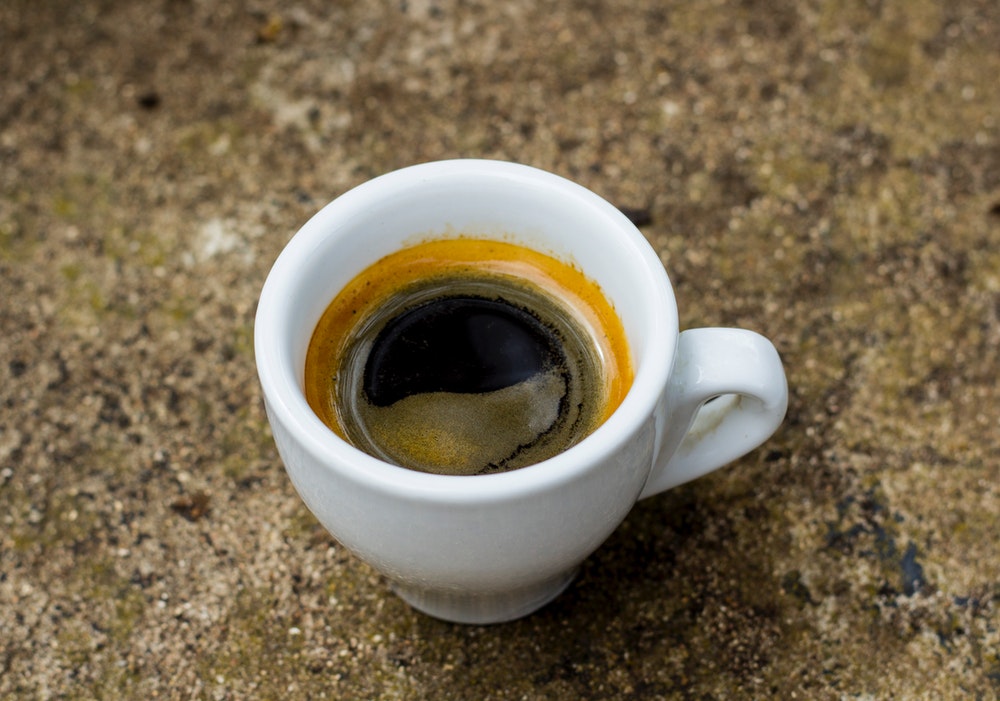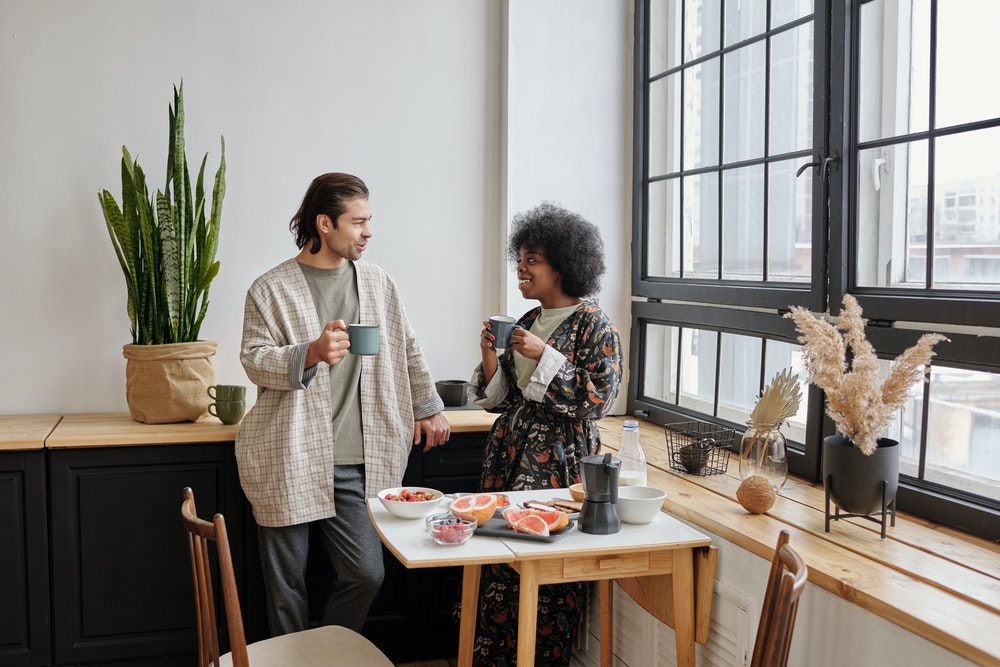Known for its sweet and strong taste, Vietnamese coffee has a special place in the heart of many coffee aficionados. Traditionally, it is brewed with a metal filter called phin. Unlike other forms of coffee, the Vietnamese style often adds sweetened condensed milk, which gives a perfect balance with the bitterness of the strong taste. This allows for a tasty and refreshing drink. No matter if you want to try something new or bring back your memory when travelling to this beautiful country, this guide will show you how to make Vietnamese coffee.
Vietnamese coffee brewing methods
There is a variety of ways to brew Vietnamese coffee. If possible, you can explore all of them to find the best option for your taste. For beginners, there are basically two main methods:
A. Traditional Vietnamese coffee filter
Traditionally, Vietnamese people brew coffee with their own kit, also known as a phin. It includes a filter chamber, a cup spanner, a filter press, and a cap. This tool is mostly made of stainless steel or aluminium and can be purchased at most Asian grocery stores.
Unlike other dripping methods that use paper filters, the filter of a phin contains dozens of small holes, where the coffee can pass through. That’s why you should choose medium coarse grounds to make Vietnamese coffee.
In this guide, we will show you how to make Vietnamese coffee with a phin.
B. Espresso
Another common method in many Vietnamese coffee shops is using Espresso. It is much quicker than using a traditional filter, often taking less than 3 minutes. Also, you can make bigger batches to serve many people at the same time.
C. French Press
A French press is also known as a plunger. In this method, you need to brew ground coffee in hot water before filtering it with the press. The resulting coffee has a relatively similar taste to that of a traditional filter. However, you can make a larger quantity, depending on the machine’s size.
What you will need
Before starting, you need to prepare the following tools and ingredients to make Vietnamese coffee:
Tools
- A spoon
- A kettle
- A clear and heat-proof glass (350 millilitres)
- A Vietnamese coffee filter, also known as phin
Ingredients
- Several ice cubes
- 1 cup of water (230 millilitres)
- 10 grams of medium ground coffee beans, ideally dark roasted Arabica
- 30 millilitres of sweetened condensed milk
How to make Vietnamese coffee with a traditional phin
Step 1
Pour sweetened condensed milk into the glass. Make sure to choose condensed rather than regular milk because it is stickier and thicker. Ideally, people use a clear glass or mug so that they can watch the coffee dripping slowly and monitor the process.
If you do not want much sugar, consider using evaporated milk or unsweetened condensed milk.
Step 2
A Vietnamese coffee maker basically consists of four components: a cap, a filter press or insert, a filter chamber, and a cup spanner. In this step, you need to take the cap off, remove the filter press from the filter chamber, and then remove the filter chamber from the cup spanner.
Next, put the cup spanner on the top of the cup or glass and place the filter chamber on the recessed spanner.
Step 3
Add coffee grounds to the empty filter chamber. Tap it to help settle the coffee and help it drain evenly.
Step 4
Put the filter press into the filter chamber and press it gently to tamp down the grounds. You should tighten the crew located in the middle of the filter clockwise. Stop when it is snug against the grounds.
Avoid overtightening to give the coffee enough space to bloom. If your coffee filter does not have a screw to tighten, then you can skip this step. Instead, it will use the weight of water or gravity to brew coffee later.
Step 5
Use a stovetop or electric kettle to pour water until it boils. Another option is to use a saucepan. Just put it on the stove with medium heat. After that, way about 30 to 60 seconds to let it cool.
The ideal water temperature to brew Vietnamese coffee should be between 90 and 95 Celsius degrees or 195 and 205 Fahrenheit degrees.
Step 6
Pour boiled water into around one-fourth of the filter chamber. Wait around 20 seconds for the coffee to bloom. During this time, try to monitor the drip rate. Ideally, it should have slow drips instead of a quick stream. Make sure to adjust by loosening or tightening the crew of the filter press accordingly.
Step 7
Once the drip rate is adjusted, add more hot water into the filter chamber until it is nearly full. Put the cap on the top of the chamber to retain heat inside.
Step 8
Wait around 4 to 6 minutes for the coffee grounds to brew. It is ready to drink when the coffee stops dripping and no water is left inside the brewing chamber. Carefully remove the whole filter by holding on the bottom of the cup spanner. Clean the coffee filter and now you can enjoy your drink.
Watch this short clip to learn more about how to make a perfect cup of Vietnamese coffee:
How to drink Vietnamese coffee
Some people enjoy drinking Vietnamese coffee unstirred. This means you can leave the sweetened condensed milk untouched at the bottom of the cup.
By doing this, you would drink black coffee first and complete with the coffee-flavoured and sweet condensed milk later. The experience is quite like eating fruits on the bottom of unstirred yoghurt.
Of course, you can still stir the coffee to mix the coffee and milk. This creates a thick and creamy drink that tastes both strong and sweet at the same time. In fact, it is one of the most unique features that make Vietnamese coffee so popular in the coffee community.
Vietnamese coffee can be served iced or hot. If you do not like a cold drink, just drink the coffee immediately after brewing. Otherwise, add a few ice cubes and wait several minutes for the coffee to chill and enjoy.
Different versions of Vietnamese coffee to try
Vietnamese coffee is definitely one of the most versatile drinks in the world. You can add a variety of ingredients to experience different tastes and flavours.
Egg coffee
Not kidding. Egg coffee is a serious thing in Vietnam. In fact, it is very delicious and many people fall in love with it in the first try. Egg yolk is whipped with sweetened condensed milk to create a rich and airy froth. The taste is quite like usual cappuccino, making it a perfect choice for a dessert.
Fruity coffee or coffee smoothie
In addition to sugar and sweetened milk, a healthier and probably tastier way to enjoy Vietnamese coffee is to add fruits. Local people often use mashed avocadoes or bananas. These tropical fruits can make the drink become creamy and thick.
Coconut coffee
This version of Vietnamese coffee was invented by one of the largest coffee shops in the country. It is a favourite choice among young people over the past few years. Black coffee is simply blended with coconut milk and a bit of condensed milk. The result is a frosty beverage that can quench your thirst during the hot summer days.
Weasel coffee
Also known as Kopi Luwak, this version of Vietnamese coffee is very famous and popular. Though many of you might not like it when learning about the process of making, the taste and flavour of weasel coffee is simple impeccable.
Weasels are fed robusta beans and then the excreted beans are cleaned and roasted to produce this special variety. In fact, the prices of weasel coffee are often much more expensive than other Vietnamese beans.
Salt coffee
Strange, right? Salt coffee is another mind-bender. But you will change your mind when you give it a try. Salt is added and thoroughly blended to help bring out the smoky flavours. It can also balance out the creaminess and sweetness of the condensed milk. You can think of this variety as a dark chocolate truffle mixed with sea salt.
Yoghurt coffee
If you are a big fan of coffee and yoghurt at the same time, then this mixture is a perfect choice. Creamy and rich, yoghurt can be put on the top and sipped with black coffee.
Otherwise, you can blend the drink to bring a stick and creamy look. Just make sure to control the sugar content in yoghurt products, or it can ruin the original taste of your Vietnamese coffee.
Useful tips to make Vietnamese coffee

The recipe above is simple to make without needing too many ingredients and tools. However, there are a few things that you need to keep in mind to have a perfect taste and flavour.
How much coffee to brew?
Ideally, you do not need too many coffee grounds to make a cup of Vietnamese coffee. 10 grams or 1 tablespoon are enough. Vietnamese coffee is known for its strong taste. Therefore, if you add too much, it would be too bitter, especially when you try it for the first time.
How much condensed milk to add?
The answer completely depends on your personal preferences. Feel free to add a bit more if you want to enjoy the sweetness. However, avoid having too much because it can ruin the original taste of the coffee. It is advisable to use condensed rather than regular milk to achieve a thick and creamy result.
How to keep brewed coffee fresh
There are two factors to keep in mind for keeping Vietnamese coffee fresh. Firstly, oxygen can diminish the flavour in a few hours or days. Therefore, you should keep them in bags and seal them tightly to avoid direct contact with the air.
Secondly, extreme cold can slow down the loss of flavour. Thus, consider putting the coffee in the freezer or fridge to keep it lasting longer.
Reasons to try Vietnamese coffee
Vietnamese coffee has gained popularity all over the world in the past decade. Here are some factors that make it a favourite drink for many people:
Strong and bold taste
Vietnamese coffee is both on the stronger and sweeter side of coffee flavours. What makes it so strong compared to other styles is the use of robusta beans grown and processed in the country. This is not surprising because Vietnam is one of the largest exporters in this product.
Naturally, robusta beans contain more caffeine than arabica and other categories. Therefore, the taste and flavour of Vietnamese coffee can easily impress anyone in the first try. In case you want a bit of sweetness, just add sweetened condensed milk and you will have a perfect combination.
No fridge needed
Vietnamese coffee often includes sweetened condensed milk rather than sugar, regular milk, or cream. The thick and sticky milk can be a bit overpowering, but its sweetness can perfectly counteract the richness of the coffee beans.
More importantly, you do not need a fridge to keep the coffee lasting long. Simply transfer it into a container or jar with a lid for later use.
A variety of versions

There is no wrong way to drink Vietnamese coffee. Whether you want to serve it cold or hot, add milk or sugar, the taste is still strong and delicious.
Depending on personal preferences, there is a variety of versions to try, from coconut coffee, egg coffee, fruity coffee, to salt coffee or even beer coffee. The options are almost endless to help you satisfy your coffee cravings.
The bottom line
Vietnamese coffee is sweet, strong, and creamy. More importantly, it is very simple to brew at home with several simple tools and ingredients. If you want to have an exotic coffee experience, try our recipe and enjoy its bold taste!